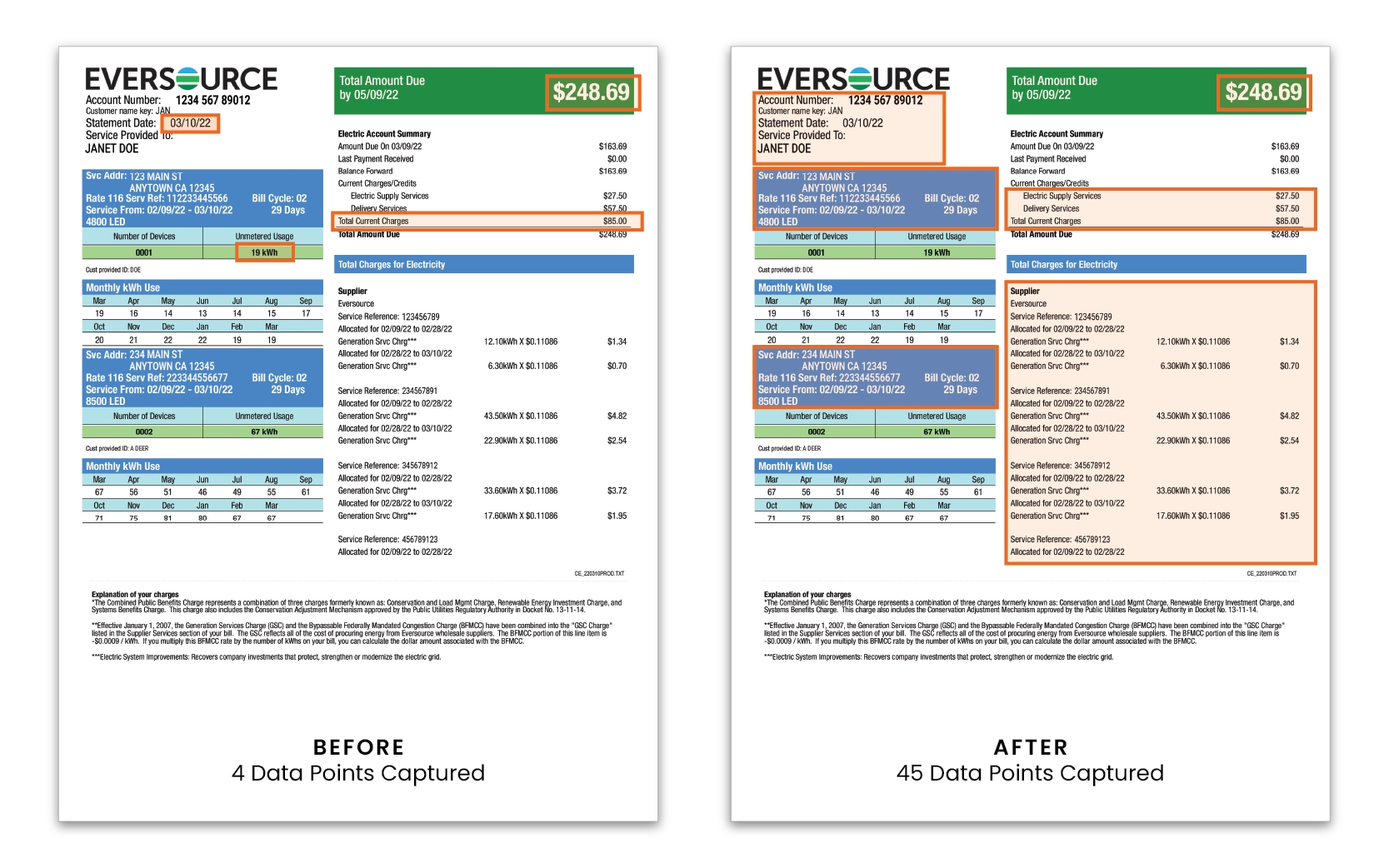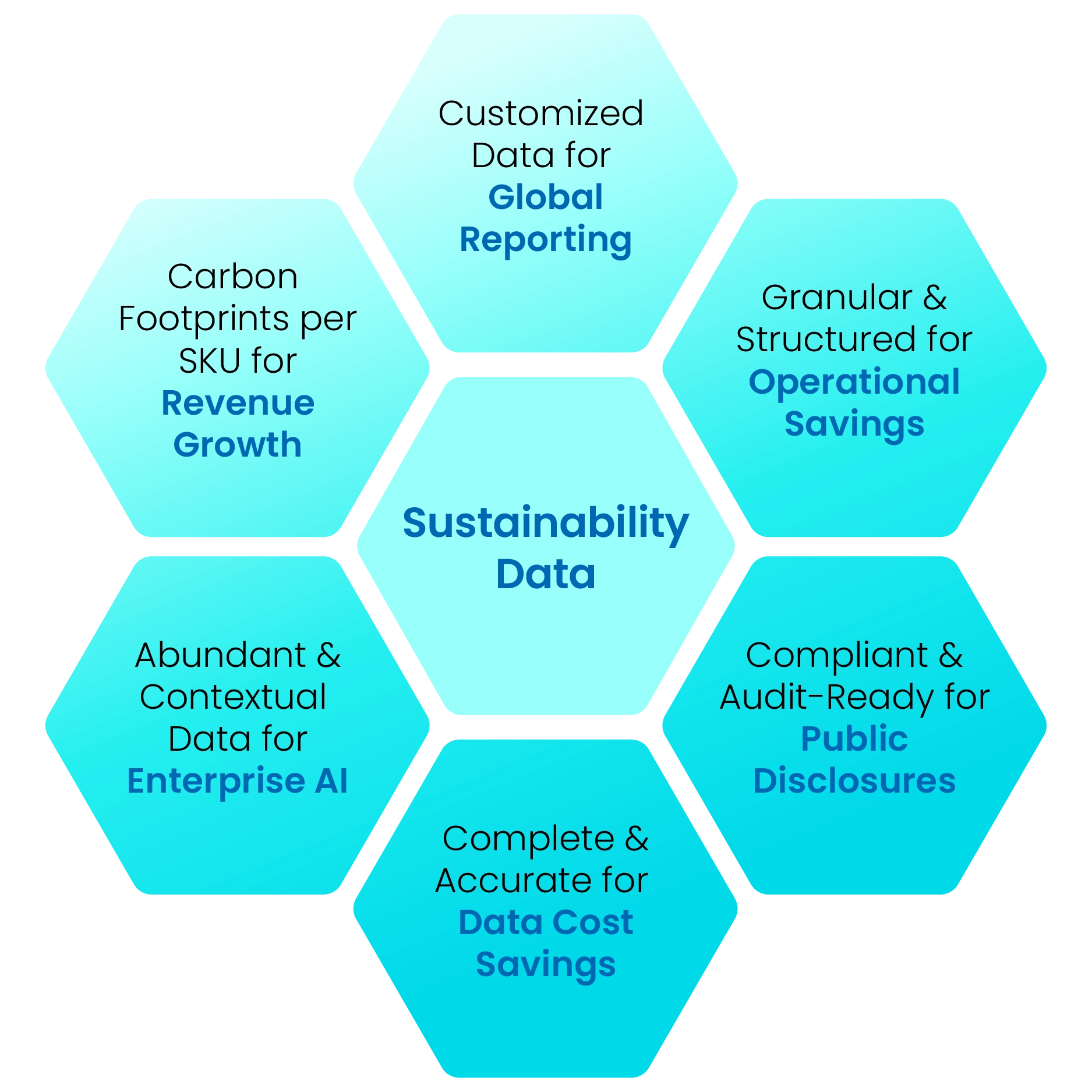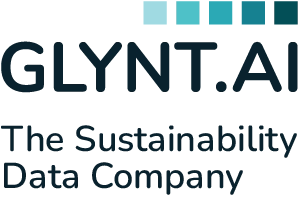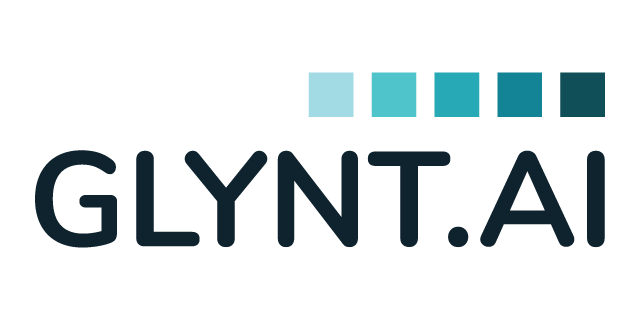The Sustainability Data Buyer’s Guide: Unlock Value with Automation
Introduction
This guide is for sustainability and finance teams struggling with data readiness. Too many organizations rely on scattered spreadsheets and semi-automated systems that demand countless hours – creating a cycle of exhaustion, errors, and missed deadlines. With so much time spent collecting and compiling data, there’s little capacity left for what matters most: analysis, planning, and strategy.
A sustainability data service changes everything – delivering accurate results faster and reducing costs by over 70%. Instead of scrambling to compile energy, water, waste, and emissions data, teams receive updated, audit-ready information on a weekly or monthly basis.
At GLYNT.AI, we provide an AI-powered sustainability data service to businesses worldwide. We eliminate manual work while ensuring finance-grade accuracy, rigor, and efficiency — freeing your team to focus on strategy, not spreadsheets.
This guide includes two parts:
- 5 Strategic Buying Considerations to help evaluate options and align your team.
- A Practical Implementation Checklist to guide a smooth rollout and build consensus.
Ready to unlock measurable business value from your sustainability data? Let’s begin.
5 Strategic Buying Factors for Automated Sustainability Data Services
Before digging into the technical features of an automated sustainability data service, consider the strategic implications. Below are 5 key buying factors that align sustainability with business value.
#1 Save Time and Money – with Automation
Every sustainability journey started with a spreadsheet, but today, sustainability teams are expected to create measurable business value. Manual processes that once worked for small projects now struggle to keep pace with growing reporting requirements and rising expectations from investors, regulators, and internal teams. An automated data service delivers exactly what’s needed – transforming time-intensive manual processes into streamlined, reliable systems.
Not all sustainability data is built the same. Our short guide walks you through the key features that make automation effective, so you can identify a solution that truly saves time and money: Not All Automated Systems Deliver the Same Results
Typical GLYNT.AI customers save 70 – 90% over current systems. With our Savings Calculator, you can quickly quantify your potential savings and present a clear, data-backed business case to your finance team.
See the GLYNT.AI Savings Calculator
Takeaway for sustainability teams: Deliver an immediate win by demonstrating time and money savings with an automated data service.
Takeaway for finance teams: Financial data is prepared in a streamlined, automated system. Get the same rigor and efficiency – with cost savings – in an automated sustainability data service.
#2 Liberate More Data Than Ever Before – with Automation
As recently as 2023, sustainability teams had a single mandate: Report. Delivering four data points per site was sufficient: amount used, cost, when used and emissions.
Now, sustainability teams must create business value. Consider the cost of electricity, which is rising everywhere. To build a case for energy-saving investments, teams need to answer: What is the business case for energy savings investments? Where should this action be taken?
High-level data sets simply can’t handle the complexity of how utilities are priced – often with complex rates and locale-based pricing structures – and how usage drives costs. To build reliable savings projections, sustainability teams need more detailed data: usage at the meter level and line-item charge details that identify the specific costs that will be reduced.
An automated data service processes the same source files but captures exponentially more data from every page.
In a recent customer engagement, GLYNT.AI increased the number of data points per file by 15X. The customer used the data to pinpoint the 30 meters out of 3500 total meters that could deliver a high energy-saving ROI. The result was $9 of energy savings per $1 spent on automated data services.
Takeaway for finance teams: The header information on an invoice is just enough to pay the bill. But to build the business case for savings, get all the usage and cost data too.
SAME SOURCE FILE, 15X MORE DATA POINTS

#3 Get Apples-to-Apples Data – with Data System Rigor
To drive real business value, sustainability data must align seamlessly with existing business data and decision-making processes.
Consider this scenario: A product manager wants to reduce a product’s carbon footprint to win over a key customer. How much should be spent to make that reduction? The business decision requires comparing the cost of changes against carbon reduction benefits, typically at the SKU level. Financial accounting already produces cost per SKU, sustainability teams must deliver emissions by SKU in the same format and timeframe.
This is finance-grade sustainability data, structured, validated, and fully aligned with business reporting standards. While spreadsheet-based workflows follow simple linear steps – do this, then this, and finally that – finance-grade data requires systematic rigor, with multiple layers of calculations, tests and controls. The system is run by software code and the code can be updated with lessons learned, driving out more potential errors each month.
Takeaway for sustainability teams: To drive business impact, use sustainability data that is aligned with financial data. This requires a finance-grade preparation system.
Takeaway for finance teams: With rising costs of climate change, this type of business tradeoff will be ever more frequent. Finance-grade sustainability data is a must-have for good decision making.
#4 Align with the Corporate Calendar – with Timely, Fresh Data
Long before the sustainability function entered the scene, companies set up annual review calendars: strategy reviews, budget proposals, project analyses, and investment decisions. Over time, these processes became routine and teams across the company learned to organize their activities to the annual calendar.
To add business value, sustainability teams must operate on this same schedule. That means having the right data ready at the right time–because no one will delay decisions while waiting for the sustainability team to finish collecting data.

Here’s a common situation: Data centers use quite a bit of water, driving concern about water cost and availability. To save water, the sustainability team has found three projects that need finance approval. The projects will be reviewed by the committee on August 1, and the business case must be submitted July 15. The sustainability team starts work in May and plans to do a last-minute data update on July 13.
Without fresh data, the team will be forced to use data from last year. The finance team will find this quite odd. And what if last year’s data is not quite done? How can the sustainability team even start?
Takeaway for sustainability teams: Align with the corporate calendar. Use an automated data service to get the right data at the right time.
Takeaway for finance teams: There’s no need to compromise. As you review investment plans that reduce water, energy and waste, an automated sustainability data system will deliver the fresh rigorous data you need.
#5 Leverage The Centrality of Sustainability – with Business Metadata
The cost of climate change is rising with increased frequency and severity of events, and a higher cost per event. CEOs and top decision makers are concerned, and are using sustainability data to reduce key costs, enhance product positioning and manage business risk.
To deliver this core business value, sustainability data must be integrated with business data. Metadata is data about data, and business metadata includes site codes, payment transaction IDs, vendor IDs and so on.
Takeaway for sustainability teams: Make your data speak business. Integrate business metadata with sustainability data.
Takeaway for finance teams: Provision the business metadata to the sustainability team. The value back to you is enormous!
Bonus value: AI researchers have found that metadata reduces AI errors (aka hallucinations). Be an AI-readiness leader by integrating business metadata with sustainability data.
Sustainability teams have started on this path, as most include site identifiers in sustainability data. But take this further, include AP records, master vendor IDs and so on. Then other business teams and top management can use your data!

Next Steps
Ready to see what GLYNT.AI can do for you and your company?
Resources
Finance-Grade Sustainability Data
Integrated Reporting
Read the Guide
The TCO Calculator
Contact GLYNT.AI

New to GLYNT.AI
© 2025 GLYNT.AI, Inc. | #betterdatafortheplanet | Terms of Use | Privacy Policy | Compliance Framework



